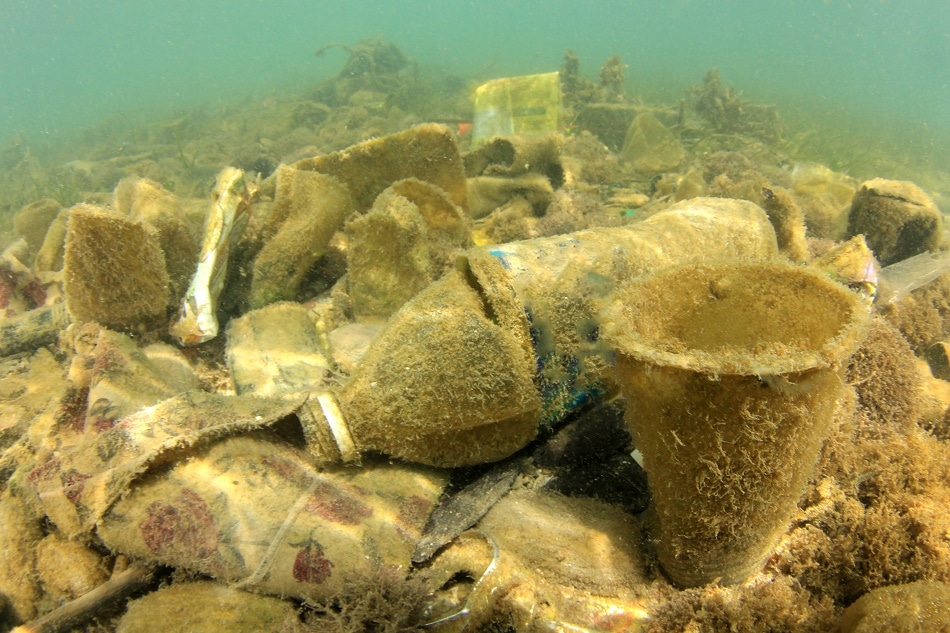
Image credit: Rich Carey / Shutterstock.com
Plastics have found their way into the fossil record according to a new study. The news comes on the back of the increased awareness in the public eye regarding the problem of disposable plastics. Humanity is slowly waking up to the overwhelming issue it faces concerning the production and usage of plastics in consumer products.
The researcher’s findings show that decades of plastic pollution contaminating the sediment record at an exponential rate, going as far back as 1945, could be used to mark the start of the Anthropocene – the proposed geological epoch in which human activities has a dominating impact on the planet. While we have previously denoted the phases of the bronze and iron ages, scientists now suggest this could be the ‘plastic age.’
The study, the first of its kind to analyze in detail the rise of plastic pollution in sediments, looked at a sediment core in Southern California dating back to 1834. Yet, it wasn’t until 1945, after the Second World War, that plastic production really exploded which correlates directly with the findings of the study. Not only does the study reflect the rapid growth of plastics over the past 70 years but also mirrors the increased population along the Southern California coast.
“Our love of plastic is being left behind in our fossil record,” said Jennifer Brandon, at the Scripps Institution of Oceanography at the University of California San Diego, who led the study.
It is bad for the animals that live at the bottom of the ocean: coral reefs, mussels, oysters and so on. But the fact that it is getting into our fossil record is more of an existential question.
Jennifer Brandon
Usually, geologists depend upon radioisotopes to mark the beginning and ends of significant epochs. Yet, fossils can be used as proxies to assess the age of sedimentary layers. The ocean sediment tells a clear story of the world’s growing reliance on plastic, the study argues. In 2010, the most recent year subject to analysis, a 10cm2 patch of ocean contained almost 40 particles of plastic pollution. This confirmed that the amount of microplastics and rate of plastic deposition in the sedimentary layers had doubled around ever 15 years since 1945.
Most of the plastics found - almost two thirds - in the post 1945 core are plastic fibers with the rest being made up of plastic films and other fragments of plastic. “It is a very clear signature,” Brandon said. “Plastic was invented and pretty much immediately we can see it appear in the sedimentary record.”
However, not all plastic makes its way down to the ocean floor, much of it floats at the surface. The 2009 landmark Great Pacific Garbage Patch study revealed a vast area of debris 1000 miles from the coast of San Diego.
However, the concentration of microplastics off the coast of California, where these researchers did their work, could even be comparatively lower compared to other areas across the planet. This makes it much harder to determine the effects of plastics on organisms. While research is limited, consuming plastics is known to harm marine creatures and could also damage humans too as microplastics can release toxins and cause damage to tissues. Allen Burton, an eco-toxicologist at the University of Michigan, said, “If they were doing the same thing in the Yellow Sea in China, right outside some of the big rivers like the Yangtze and Yellow River, the concentrations would probably be huge and cause adverse effects.”
Every year, many millions of tonnes of plastic are discarded and released into the environment often breaking down into tiny particles and fibers that cannot biodegrade. Furthermore, research is also finding microplastics everywhere from the highest mountains and deepest oceans, even in the Arctic air, showing the impact and detrimental effect and pollution our production and use of plastics is the having on the planet.
Perhaps the time is now to start thinking about our relationship to plastics and how to deal safely and effectively with their disposal or face the prospect of an ecological disaster.
Disclaimer: The views expressed here are those of the author expressed in their private capacity and do not necessarily represent the views of AZoM.com Limited T/A AZoNetwork the owner and operator of this website. This disclaimer forms part of the Terms and conditions of use of this website.